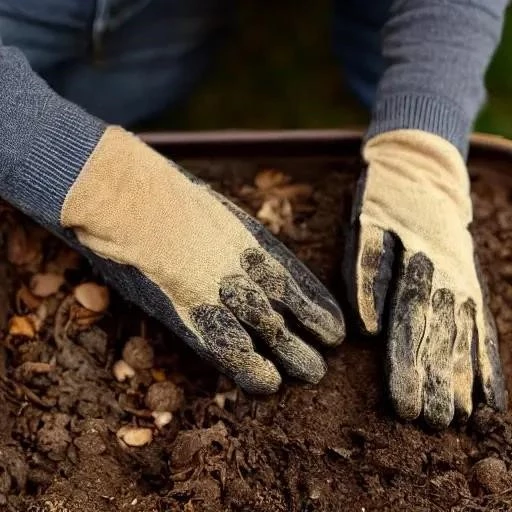As the depths of winter gradually recede, a remarkable transformation begins to stir across the United Kingdom’s verdant landscapes. February, often perceived as a dormant month, is, in fact, a pivotal period for the discerning gardener. It’s an incredibly opportune moment, a secret window of preparation, where every thoughtful action taken now profoundly impacts the vibrancy and yield of your garden in the glorious months ahead. This isn’t merely about planting; it’s about strategizing, nurturing, and setting the stage for an unparalleled horticultural spectacle. By embracing these crucial UK February gardening tips, you can meticulously craft a sanctuary that will burst forth with life, color, and abundance.
The air, though still carrying a crisp chill, whispers promises of warmer days, beckoning gardeners to emerge from their winter slumber. From the nascent shoots of snowdrops bravely piercing the frozen earth to the first sightings of early daffodils, nature itself is orchestrating an awakening. This month offers a unique blend of reflection and proactive engagement, allowing you to fine-tune your approach, mend what winter has challenged, and lay robust foundations for spectacular growth. Prepare to delve into expert-backed strategies designed to maximize your garden’s potential, transforming it into a flourishing haven that reflects dedication and foresight.
Essential February UK Gardening Insights
| Category | Key Tasks for February | Anticipated Benefits | Expert Recommendations & Resources |
|---|---|---|---|
| Propagation & Planting | Prepare vegetable seed beds; sow seeds indoors (beans, cabbage, peppers, tomatoes, lettuce, aubergines); chit potato tubers; plant bare-rooted roses, shrubs, climbers during mild spells. | Early harvests; stronger, more established plants; jump-starts the growing season. | RHS advice emphasizes starting seeds under cover for optimal germination. |
| Pruning & Maintenance | Prune roses (aim for goblet shape), fuchsias, wisteria, dormant apple/pear trees, winter-flowering shrubs post-bloom, autumn-fruiting raspberries; check newly planted trees for stability and add supports/compost; clear garden debris. | Improved plant health and vigor; enhanced flowering/fruiting; structural integrity; disease prevention. | Smiths Garden Centre highlights pruning roses for better air circulation and form. |
| Soil Health & Protection | Prepare garden soil, incorporate natural plant foods (e.g., Fish, Blood and Bone); net fruit/veg crops against birds; protect delicate buds (Camellias) and fruit tree blossoms (apricots, peaches) from frost; check fleece protection. | Nutrient-rich soil for robust growth; safeguarding vulnerable crops and plants from pests and frost damage. | BBC Gardeners’ World advises on enriching soil and vigilant frost protection. |
| Specific Plant Care | Lift and divide snowdrops “in the green” (after flowering); cut back Sedum; force rhubarb; sow sweet peas. | Increased plant propagation; stronger, healthier clumps; earlier rhubarb harvest; fragrant blooms. | Gardeners Notes Blog provides detailed guidance on snowdrop division. |
| For more comprehensive advice, visit: The Royal Horticultural Society (RHS) | |||
Cultivating the Future: Seed Starting and Soil Enrichment
February unequivocally marks the beginning of the growing season for many vegetables and flowers, particularly when utilizing the undeniable advantages of propagation under cover. Imagine the sheer satisfaction of cultivating your own robust seedlings, bypassing the inherent risks of direct outdoor sowing. Experts at Frosts Garden Centre consistently advocate for starting vital crops like beans, summer cabbage, peppers, and tomatoes indoors now, giving them a crucial head start. This strategic move ensures more resilient plants, less susceptible to early spring’s unpredictable whims. Concurrently, preparing your vegetable seed beds is paramount. Envision your soil as a canvas; by enriching it with natural plant foods such as Fish, Blood and Bone, you are imbuing it with essential nutrients, creating an incredibly fertile ground for future growth. As the soil thaws, gently turning it and incorporating organic matter will dramatically improve its structure and fertility, paving the way for bountiful harvests.
The Art of Pruning: Shaping Growth and Ensuring Vitality
Pruning in February is not merely a chore; it’s an art, a deliberate act of sculpting that profoundly influences your plants’ health and aesthetic appeal. This month presents the ideal window for attending to various woody plants. Roses, for instance, benefit immensely from a thoughtful prune, removing any winter-damaged or crossing branches. Aim for a goblet shape, a technique championed by Smiths Garden Centre, which remarkably enhances air circulation, minimizing disease risk and encouraging vigorous new growth. Similarly, dormant apple and pear trees, along with fuchsias and winter-flowering shrubs that have completed their bloom, demand your attention. Cutting back autumn-fruiting raspberry canes to the ground prepares them for a productive season. This meticulous care, often underestimated, acts as a powerful catalyst, directing the plant’s energy towards producing more flowers and fruits, rather than maintaining unproductive wood.
Protecting Your Investments: Vigilance Against the Elements
Even as the days lengthen, February in the UK remains intrinsically linked with the risk of frost and biting winds. Vigilance is, therefore, your most potent tool. Newly planted trees, still establishing their root systems, require diligent inspection; firming up the soil around their base and adding extra supports can prevent irreparable damage from strong gusts. Furthermore, delicate new buds, particularly on cherished camellias, and the nascent blossoms of fruit trees like apricots and peaches, are incredibly vulnerable to late frosts. Employing fleece protection or even simple hessian coverings during colder nights can be the difference between a thriving display and a disheartening loss. The RHS consistently advises gardeners to remain acutely aware of local weather forecasts, adapting their protective measures accordingly. Proactive safeguarding ensures that your garden’s burgeoning life is shielded, allowing it to flourish unhindered by nature’s lingering winter grip.
Beyond the Basics: Specialized Tasks for a Flourishing Garden
February also offers unique opportunities for specialized tasks that contribute significantly to a garden’s long-term health and beauty. Take snowdrops, for example. Maximizing their spread can be incredibly effective by lifting and dividing them “in the green”—that is, just as they finish flowering but while their foliage is still active. This method, often highlighted in gardening blogs like Gardeners Notes, allows for successful transplantation and establishment. Chitting your first early potato varieties, a simple yet profoundly impactful step, involves placing tubers in a cool, light space to encourage shoots, preparing them for planting in March. This foresight ensures an earlier, more robust crop. Moreover, this is an excellent time to tackle pervasive perennial weeds, clearing beds for spring planting. By dedicating time to these nuanced tasks, you’re not just maintaining; you’re actively enhancing your garden’s resilience, diversity, and overall aesthetic appeal, crafting an outdoor space that truly sings with life.
Embracing the Promise of Spring: A Forward-Looking Perspective
As we navigate the transformative month of February, the overarching message for UK gardeners is one of boundless optimism and proactive engagement. Every task undertaken, from the careful pruning of a rose to the strategic sowing of seeds under cover, is an investment in the future. It’s about more than just maintaining a garden; it’s about participating in a timeless cycle of growth, rejuvenation, and profound beauty. By integrating these expert-driven insights and embracing the potential that this pivotal month offers, you are not merely tending to plants; you are cultivating a vibrant, thriving ecosystem. So, step out into your garden with purpose and passion. The rewards of your February efforts will undoubtedly blossom into an extraordinary spring, a testament to your dedication and foresight, transforming your outdoor space into a truly awe-inspiring sanctuary.






